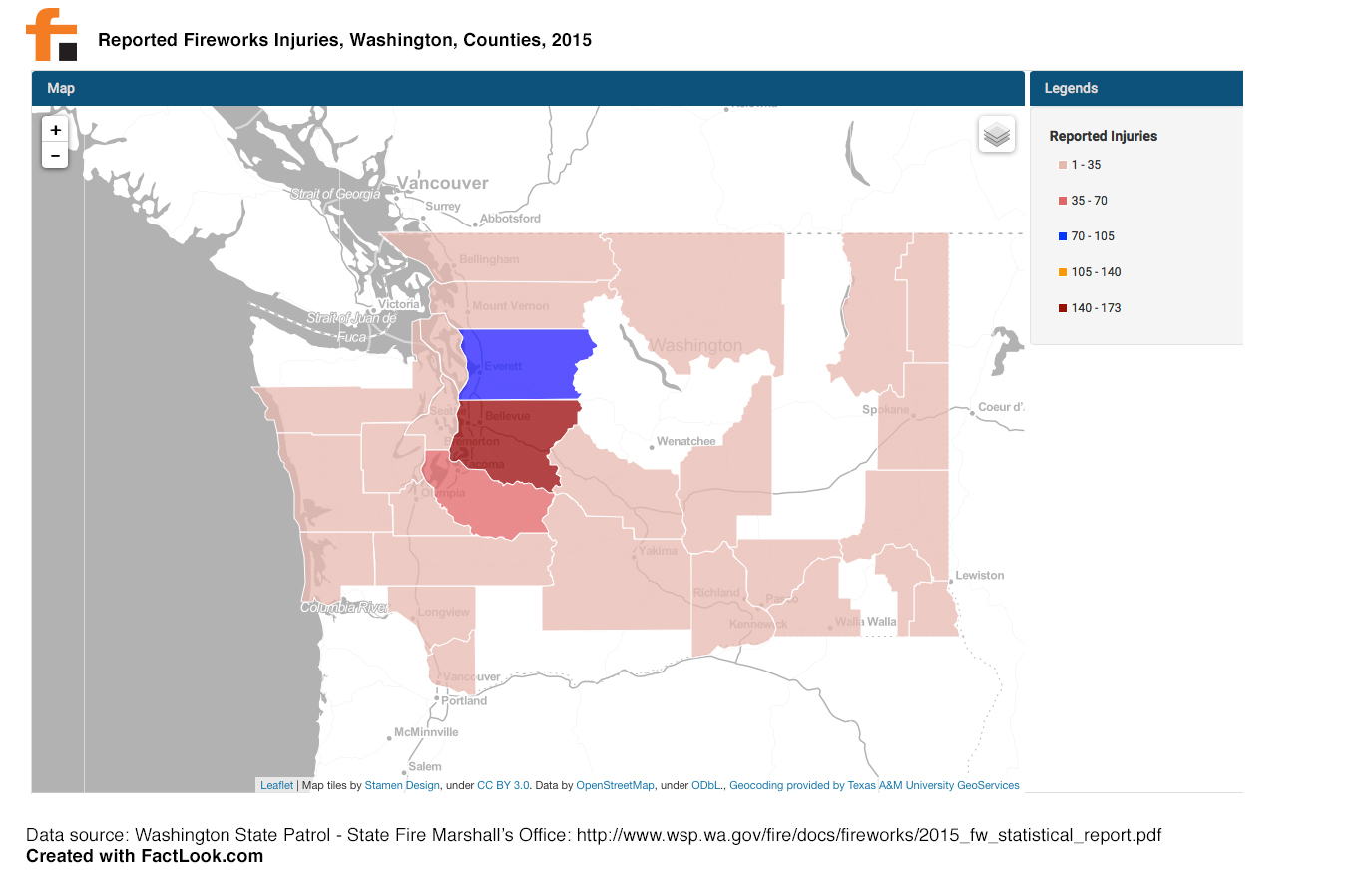Independence Day can turn into a very bad day for those who are injured by fireworks. We looked at Washington to get an idea of the number of reported fireworks injuries: the state’s fire marshall maintains an annually updated database of incidents reported by the state’s EMS and hospitals.
As would be expected, the largest concentration of injuries occurred in the counties surrounding the state’s most populated metropolitan areas.
The National Council on Fireworks Safety offers the following tips to help you avoid becoming a statistic this July 4th:
- Obey all local laws regarding the use of fireworks.
- Know your fireworks; read the cautionary labels and performance descriptions before igniting.
- A responsible adult S
HOULD supervise all firework activities. Never give fireworks to children. - Alcohol and fireworks do not mix. Save your alcohol for after the show.
- Wear safety glasses when shooting fireworks.
- Light one firework at a time and then quickly move away.
- Use fireworks OUTDOORS in a clear area; away from buildings and vehicles.
- Never relight a “dud” firework. Wait 20 minutes and then soak it in a bucket of water.
- Always have a bucket of water and charged water hose nearby.
- Never carry fireworks in your POCKET or shoot them into METAL or GLASS containers.
- Do not experiment with homemade fireworks.
- Dispose of spent fireworks by wetting them down and place in a metal trash can away from any building or combustible materials until the next day.
- FAA regulations PROHIBIT the possession and transportation of fireworks in your checked baggage or carry-on luggage.
- Report illegal explosives, like M-80s and quarter sticks, to the fire or police department.

